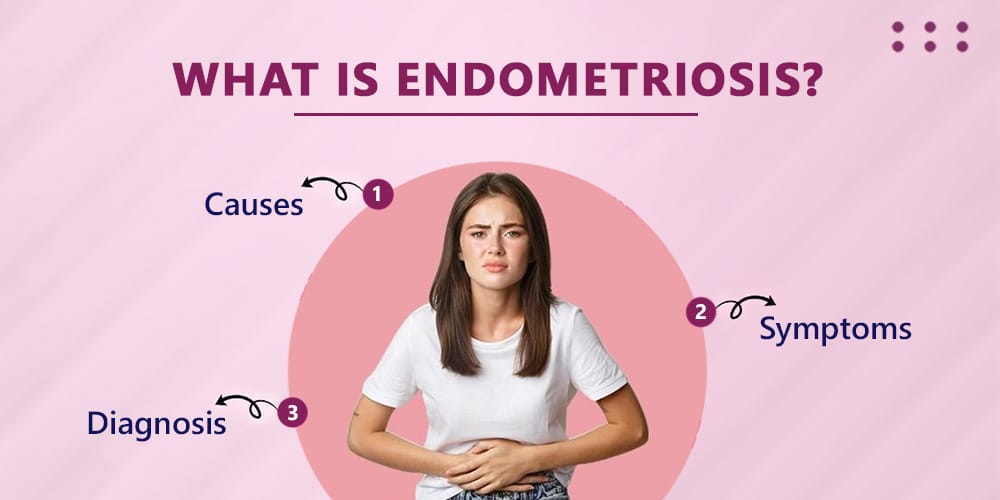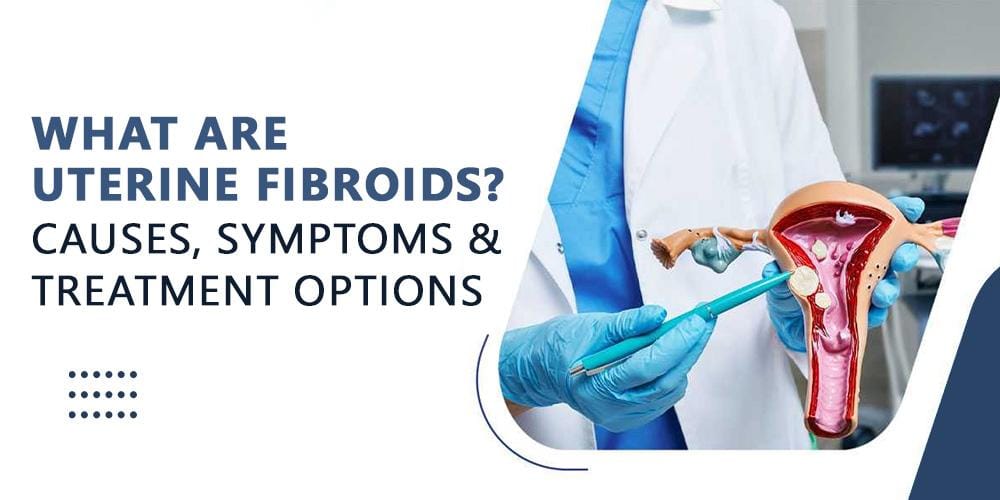Your period’s three weeks late. You take a pregnancy test: negative. Then the cramps start, sharp and one-sided, nothing like your usual menstrual pain. Your mind races through possibilities: appendicitis? Food poisoning? Kidney stones? An ultrasound reveals the actual culprit: a 6cm cyst on your left ovary. Now what?
What’s Actually Happening
Here’s what surprises most women: about 7% of women worldwide develop an ovarian cyst at some point in their lives, but this number doesn’t capture reality.
Your ovaries normally contain tiny fluid-filled follicles, dozens of them each month. These aren’t cysts; they’re part of your menstrual machinery. But when this machinery malfunctions, cysts form. Ovarian cysts are fluid-filled sacs that develop on or inside your ovaries. Some stay small as grapes, others balloon to the size of oranges or even grapefruits.
Ovarian Cyst Causes: What Triggers Them
Functional Cysts: Your Cycle Gone Rogue
Your menstrual cycle operates like clockwork for most women. Each month, a follicle grows, releases an egg, and then shrinks away. Functional cysts happen when this process derails.
Follicular cysts form when the follicle that’s supposed to burst open and release an egg just…doesn’t. Instead, it keeps filling with fluid, growing to 2-6cm. These cysts account for the majority you’ll encounter. They stick around for one to three menstrual cycles, then dissolve on their own.
Corpus luteum cysts develop after the egg is released. That follicle transforms into the corpus luteum, which produces progesterone. Sometimes it seals shut and fills with blood or fluid instead of shrinking. These grow larger, up to 10cm, and hurt more when they rupture.
PCOS: A Different Beast Entirely
Polycystic Ovary Syndrome affects a substantial portion of Indian women; the prevalence ranges from 3.7% to 22.5% in India, depending on which diagnostic criteria doctors use. These aren’t large single cysts. Instead, your ovaries develop numerous small follicles (10-15 or more on each side) that never mature enough to release eggs.
Endometriomas: When Your Period Happens Inside Cysts
If you have endometriosis, tissue similar to your uterine lining grows outside your uterus, including on your ovaries. During your period, this misplaced tissue bleeds just like your uterine lining does. But the blood has nowhere to go. It accumulates inside cysts called endometriomas or “chocolate cysts” (the trapped blood turns dark brown).
Dermoid Cysts: Your Body’s Bizarre Mistake
Dermoid cysts contain hair, skin, teeth, and sometimes even brain tissue or thyroid glands. Sounds like horror movie material, but there’s a scientific explanation.
These cysts originate from germ cells, the cells that exist in early development and eventually become eggs or sperm. Dermoid cysts grow from a single unfertilized egg cell that multiplies and divides into various tissue types. Since germ cells can theoretically become any body tissue, when they grow abnormally inside your ovary, they create this mishmash of different tissues.
Ovarian Cyst Symptoms: What You’ll Feel
Most cysts produce zero symptoms. But when they do cause problems, here’s what happens:
Abnormal Pain
You’re used to menstrual cramps, that centered, crampy aches across your lower abdomen. Ovarian cyst pain feels different. It’s localized to one side, either left or right, depending on which ovary harbors the cyst. The pain might be dull and constant, or sharp and intermittent.
Menstrual Chaos
Your previously regular periods start behaving erratically. They arrive early or late. Flow becomes heavier or lighter than usual. You spot between periods. Corpus luteum cysts can delay your period entirely, mimicking early pregnancy (hence the pregnancy test panic).
Bathroom Disruptions
A large cyst pressing against your bladder makes you feel like you constantly need to pee, even right after you’ve just gone. You wake up multiple times nightly to use the bathroom despite drinking normal amounts of water.
The Emergency Signs
Most ruptured cysts cause pain but aren’t dangerous, though sudden, intense abdominal pain with fever and nausea requires immediate attention. Seek emergency care if you experience:
- Pain accompanied by fever and vomiting
- Dizziness, fainting, or extreme weakness
- Rapid heartbeat or difficulty breathing
Ovarian Cyst Diagnosis: How To Figure It Out
Your symptoms alone can’t diagnose ovarian cysts. Several conditions mimic them: appendicitis, ectopic pregnancy, kidney stones, and bowel obstructions. Your doctor needs imaging and tests to confirm.
Physical Examination
Your gynecologist palpates your abdomen and performs a pelvic exam, feeling for abnormal masses or swelling. They can detect larger cysts (5cm+) this way, but smaller ones escape notice.
Ultrasound: The Diagnostic Workhorse
Transvaginal ultrasound provides the clearest images for ovarian cyst diagnosis. A small wand inserted into your vagina sits close to your ovaries, transmitting high-frequency sound waves that create detailed pictures.
Your doctor evaluates several characteristics:
- Size and location: Exact measurements and which ovary
- Internal structure: Fluid-filled (simple), solid tissue (complex), or mixed
- Walls and septations: Thin, smooth walls suggest benign cysts; thick, irregular walls raise concern
- Blood flow patterns: Doppler ultrasound shows blood vessels feeding the cyst
Blood Work That Actually Matters
CA-125 testing: This protein elevates in ovarian cancer, but also in endometriosis, fibroids, pelvic inflammatory disease, and even during menstruation.
Pregnancy testing: Always performed to rule out ectopic pregnancy, which mimics ovarian cysts on ultrasound and causes similar symptoms.
Hormone panels: LH, FSH, testosterone, and other hormones help diagnose PCOS when you’ve got multiple small cysts.
Advanced Imaging When Needed
MRI scans: Ordered when ultrasound findings are ambiguous or when doctors suspect cancer. MRI distinguishes between benign and malignant tissue with exceptional accuracy, showing tissue composition in ways ultrasound can’t.
CT scans: Used less frequently for cysts but helpful when doctors need to assess surrounding organs or suspect complications like rupture with internal bleeding.
The Waiting Game
For simple fluid-filled cysts under 5cm, your doctor typically schedules a follow-up ultrasound in 6-12 weeks. Why wait? Because 70-80% of functional cysts disappear completely within two menstrual cycles without any intervention.
Ovarian Cyst Treatment: What Happens Next
Active Surveillance
For simple cysts under 5cm causing minimal symptoms in premenopausal women, doctors recommend monitoring. You’ll get repeat ultrasounds every 4-12 weeks to track whether the cyst shrinks, stays stable, or grows.
Birth Control Pills
Hormonal contraceptives don’t shrink existing cysts faster. They prevent new functional cysts from forming by suppressing ovulation. If you develop functional cysts repeatedly, staying on the pill long-term reduces recurrence.
When Surgery Becomes Necessary
You need ovarian cyst surgery if:
- Your cyst exceeds 6-8cm and persists for more than three months
- Ultrasound shows complex features (solid components, thick walls, multiple chambers)
- You’re experiencing persistent, debilitating pain
- You’re postmenopausal (when cysts are less common and more concerning)
Ovarian Cyst Laparoscopy: Modern Surgical Approach
The Surgical Process
Your surgeon makes 2-4 small incisions (5-10mm each) in your abdomen. A camera inserted through one incision transmits high-definition video to a monitor.
Cystectomy: Removes only the cyst, preserving your ovary. This is preferred when you want to maintain fertility or if your ovary looks healthy aside from the cyst.
Oophorectomy: Removes the entire affected ovary along with the cyst. Done when the cyst is enormous, if cancer is suspected, or if the ovary is severely damaged beyond repair.
Recovery Reality
Week 1: Pain managed with prescription medication initially, then over-the-counter options. You’ll feel tired and sore. Walking short distances helps prevent blood clots, but exhausts you quickly.
Weeks 2-3: Energy improves daily. Most women return to desk jobs. Avoid lifting anything heavier than 5kg.
Weeks 4-6: Resume exercise gradually, walking, light yoga, swimming. Avoid high-impact activities or heavy lifting until your surgeon clears you.
Full recovery: 4-6 weeks for most women, though some feel completely normal within 3 weeks, while others need the full 6 weeks.
Open Surgery: When Laparoscopy Won’t Work
Laparotomy (open surgery through a larger incision) is reserved for:
- Cysts larger than 12-15cm
- Strong suspicion of cancer requiring staging
- Severe adhesions are preventing laparoscopic visualization
- Emergencies where speed matters more than cosmetics
Ovarian Cyst Operation Cost: What You’ll Pay
Ovarian cyst removal surgery in India ranges from ₹45,000 to ₹1,90,000 on average, with laparoscopic procedures specifically costing ₹1,72,000 to ₹2,20,000 at major hospitals.
Breaking down what affects your final bill:
Hospital tier: Large corporate hospital chains charge premium rates. Mid-sized private hospitals cost 30-40% less. Government hospitals offer subsidized rates (₹15,000-₹40,000) but with longer waiting periods.
Surgery type: Laparoscopic costs more upfront than open surgery due to specialized equipment, but you save on shorter hospital stays and faster return to work.
Cyst complexity: Simple cystectomy costs less than complicated cases requiring extensive adhesion removal or multiple procedures simultaneously.
Surgeon expertise: Senior gynecological surgeons with laparoscopic specialization command higher fees (₹25,000-₹60,000) than general gynecologists.
Geographic location: Delhi, Mumbai, Bangalore charge significantly more than Pune, Jaipur, or Lucknow for identical procedures.
Complications Worth Knowing About
What Cysts Themselves Can Cause
Rupture: Not all women feel a ruptured cyst; most experience pain at the time, plus a few days of discomfort, manageable with over-the-counter medication. Treatment at home includes rest, pain medicines, and heating pads, with a follow-up ultrasound in 2-3 months. However, large hemorrhagic cysts can cause dangerous internal bleeding requiring emergency surgery.
Torsion: Large cysts (typically over 5cm) can cause your ovary to twist on the ligaments connecting it to your body. This cuts off the blood supply, killing ovarian tissue within hours. You’ll experience sudden, severe, unrelenting pain, different from ruptured cyst pain, which often improves after the initial burst.
Infection: Rare but possible, especially if a cyst ruptures and bacteria enter your pelvic cavity.
Surgical Risks
Laparoscopic surgery carries under 3% complication risk, including:
- Bleeding requiring transfusion (under 1%)
- Bowel, bladder, or blood vessel injury (0.5-1%)
- Infection at incision sites (1-2%)
- Need to convert to open surgery if visualization becomes difficult (2-5%)
Frequently Asked Questions
Can ovarian cysts prevent pregnancy?
Functional cysts don’t impact fertility; they’re temporary. Endometriomas and large cysts that damage substantial ovarian tissue can reduce fertility, but most women conceive normally even after cyst removal. PCOS affects fertility by preventing regular ovulation, but fertility medications usually overcome this.
Should I worry about cancer? Less than 1% of ovarian cysts in premenopausal women are cancerous. Risk increases after menopause, which is why postmenopausal cysts get an aggressive workup.
Will I still have normal periods after ovary removal? If one ovary is removed and the other remains healthy, yes. Your remaining ovary compensates by producing eggs and hormones for both sides. You’ll continue having regular periods and normal hormone levels. Only when both ovaries are removed do you experience surgical menopause (unless you’re already postmenopausal).
Finding out you have an ovarian cyst triggers anxiety—that’s completely natural. But you’re now equipped with knowledge most women don’t have when they get this diagnosis. You understand the different types, what caused yours, how doctors will monitor or treat it, and what to expect if surgery becomes necessary.






